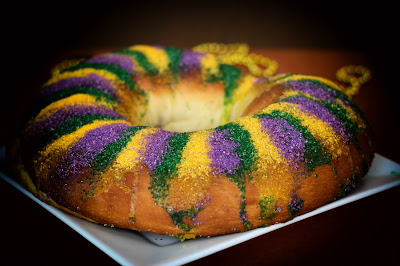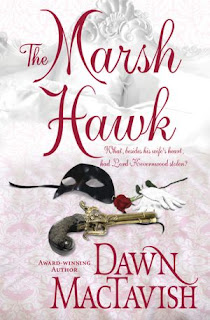To Be or Not To Be (Accurate)
That Is The Question
Facing Authors of Historical Romance
In writing Historical
Romance Fiction the author does a balancing act on up on a high wire. He loves history so we strive to make it as
accurate as possible. Yet, it is fiction, which means an author may to take liberties. The question is where to draw the line. While this article was written to address
historical do and don't questions, it could apply with any form of fictional
world-building.
Historical authors really
love history! We can easily obsess over
details that are endlessly fascinating―at
least to us. However, do readers
really want that deep of an understanding of the past? The answer: some do, some don’t. After
all, you are not writing a non-fiction work, historical book, not even a
historical fiction novel. It’s
Historical Romance. As when you
pronounce a word, certain syllables are spoken softly while one is accented;
when you say Historical Romance always put the stress on ROMANCE. Never
lose sight of that. My editor on my
first historicals, Hilary Sares (formerly with Kensington Books) says readers
are tired of “clanking swords, that history is stale, cold, while romance is
timeless.” In this, she touches on the
heart of what Historical Romance is: history
is the lesser of the ingredients in the mix.
Love carries the story.
Historical Romance is the cousin of Historical Fiction (which often has
romance in them), but they are not the same.
Once a romance author
accepts these boundaries then they are left with just how much history do you
add? History is a background for the
tapestry you weave. It should give the
reader a sense of period, but never intrude upon the romance, never stall the
story out, pausing to explain historical details or to give a history lesson. After the author reaches that level of what
will be good threads and elements to craft into the story, they next face a
final hurdle―to weigh the importance of details, the minutiae that draws the
historical authors to share their love of the past.
Only here is where it can
get tricky. Sometimes, what readers
believe is accurate often is not. “Bad”
history, incorrect word usage, or even how time has changed the meaning of
words can stymie the author. Take the
word acquaintance. Noun: “a person known to one, but usually
not a close friend.” That is how it is
accepted in today’s usage. However,
years and years ago the word meant something very different. Surprisingly,
when a man was “acquainted” with a woman, he was saying he had been physically
intimate with her. See the problem? If you are going for historical accuracy and
you say “Mr. Overton was acquainted with Miss Marple.” In the historical sense you would be saying
Mr. Overton had indulged in sex with Miss Marple! Will
today’s readers understand without you having to stop the story and tell them
that? Will a reader, lacking this
crumb of knowledge, understand what you said, or will they just believe you are
saying Mr. Overton has met Miss Marple, but they are not close friends? If the author puts that sentence out there
and wants the reader to comprehend what they are saying, then they must stop
the flow of the plot and the scene and say, “Of course, we know acquainted
means he has had sex with her.” Even
then, the reader might scratch their heads and go, hum, it does? In that
instant, you have taken them out of the story simply by using a word correctly,
but not right in today’s eyes. Right
is wrong. Rule of thumb: Rarely is
one single word ever that important to risk using, when it can pull their
reader away from the imagery to ponder if you are correct or not.
If a Historical Romance came
along and used Irish Gaelic spellings instead of Scots Gaelic—which has been
known to happen (lol), and this book using becomes a bestseller, then readers
can often assume that book to be correct.
Then other authors come along using the correct form and people
automatically presume they are incorrect.
So when readers come to the difference they often believe the right
spellings to be wrong! Okay, what then? Do you knowingly use the wrong spellings of
words to conform to what the readers have accepted as correct, or do you go
ahead and be accurate and have readers think you are wrong?
Another complexity in to be
or not be historically accurate―authors who set their novels in real places,
such as the castles of Scotland. Often,
instead of world-building and creating their own castles, some writers pick out
a very famous castle for the setting of their stories--even put the wrong clan
living there, totally disregarding most castles have a very detailed historical
record. For someone not familiar with
Scotland’s past that might not be a problem.
However, the author runs into the sticky wicket of having readers who
do, and once more, are taken out of the story because they know the true
history of the place. We must remember
it is fiction. Authors are allowed to
bend history a wee bit if it serves to make the story stronger. I won’t go as far as Randall Wallace did when
speaking of the many historical inaccuracies of his screenplay for the movie Braveheart and say history should never
get in the way of a good story. Still,
authors should be able to present a romping tale without worrying about being
one hundred percent accurate on every single detail.
Another is nationality. It can come into play in perceptions of what
is wrong and right. Take the simple way you
name the floors of a building. In
Britain and Europe, even today, the first floor of a building is the ground floor. In America, you work on the first floor in
New York, while in London you are working on the ground floor. The
first floor in Europe is actually the second level. When Regency and Victorian periods were in
flourish and they had their Seasons in London, they lived in fancy townhouses. The first floor (second floor to Yanks!) was where they did most of their
entertaining. So, if a woman entered the
front door, and went upstairs to the
first floor many Americans would assume the author is making a boo-boo,
despite they were being entirely correct!
These are just a few of the
bumps facing historical authors when trying to keep the faith with history, yet
also do a balancing act with the today’s readers and just how accurate do readers
truly want their historical romances to be?
Just remember to keep
rooted, and that romance and flow are vital to telling a whopping good yarn.
Deborah Macgillivray
http://deborahmacgillivray.co.uk
Internationally Published Author of the Dragons of Callon™ series
#PrairieRosePublications #HistoricalRomance #MedievalHistory #ScottishHistory #AuthorsTool #WritingHistoricalNovels
http://deborahmacgillivray.co.uk
Internationally Published Author of the Dragons of Callon™ series
#PrairieRosePublications #HistoricalRomance #MedievalHistory #ScottishHistory #AuthorsTool #WritingHistoricalNovels





















































